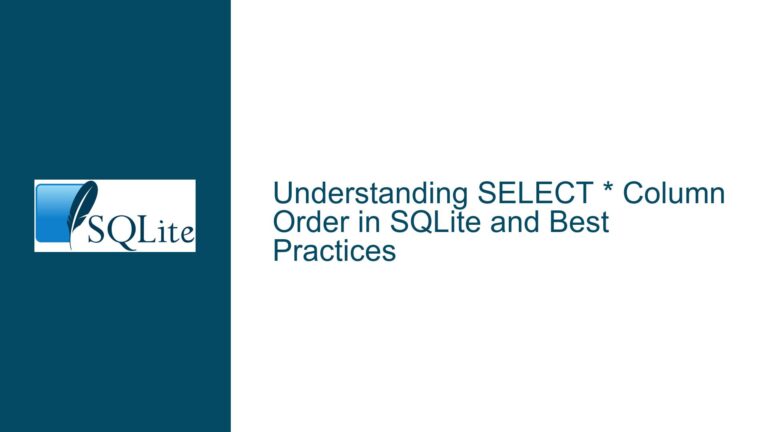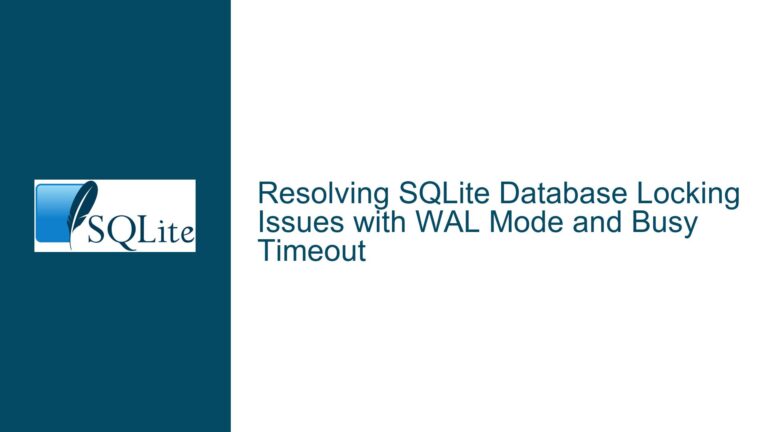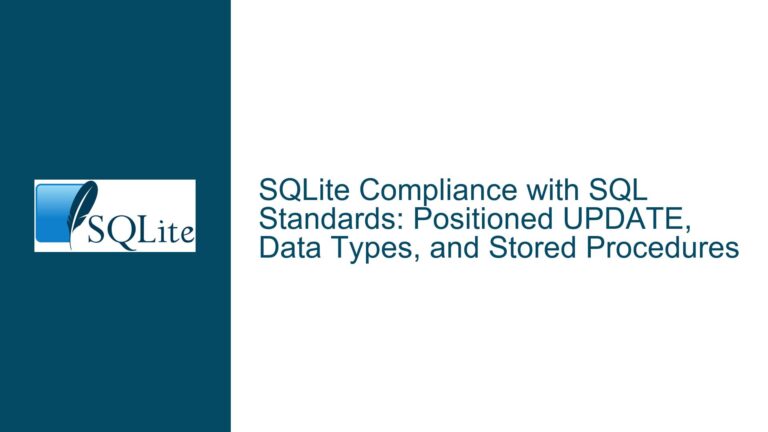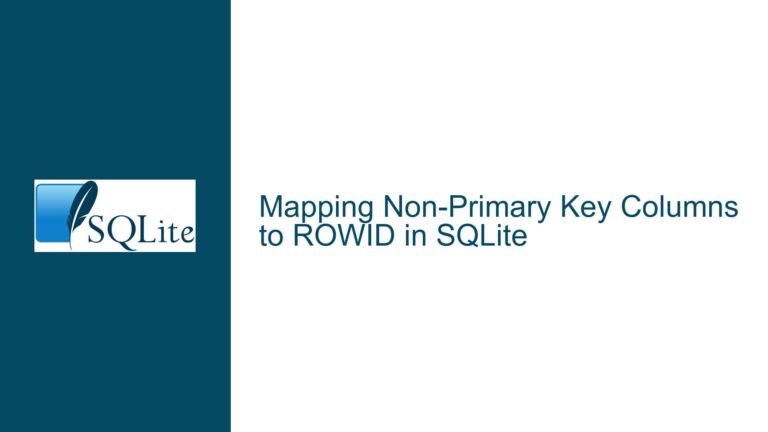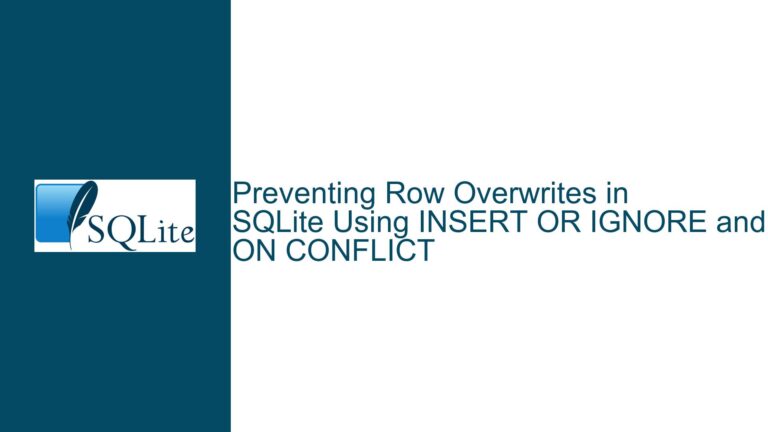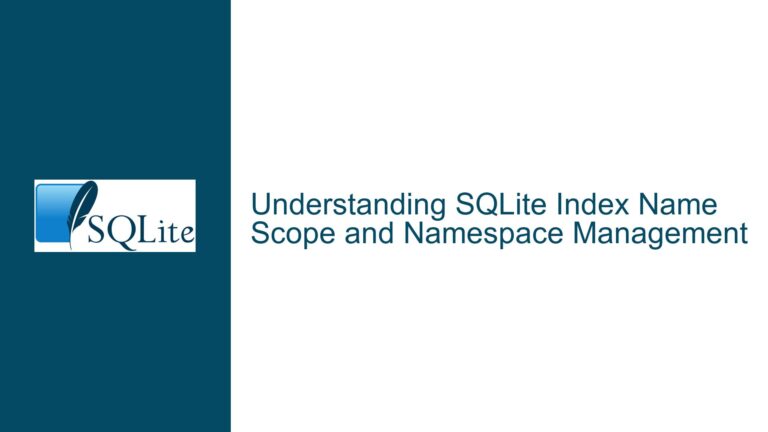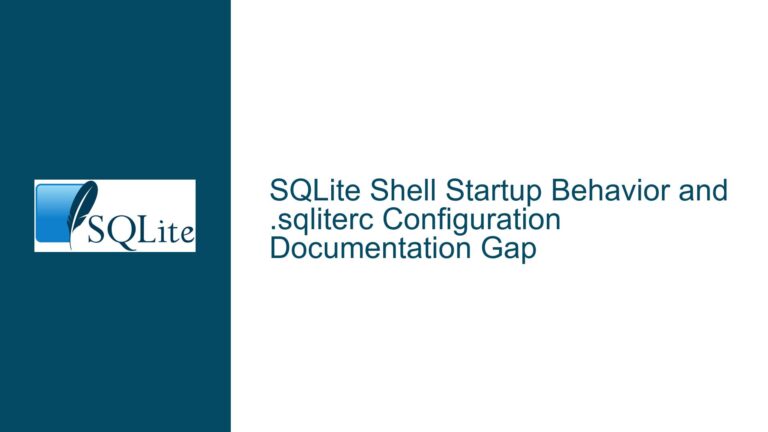SELECT * Column Order in SQLite and Best Practices
SQLite’s SELECT * Behavior and Column Order Guarantees When executing a SELECT * query in SQLite, the columns are returned in the order they were defined in the CREATE TABLE statement. This behavior is consistent with the SQL-92 standard, which states that the * notation in a SELECT statement should reference columns in ascending order…
